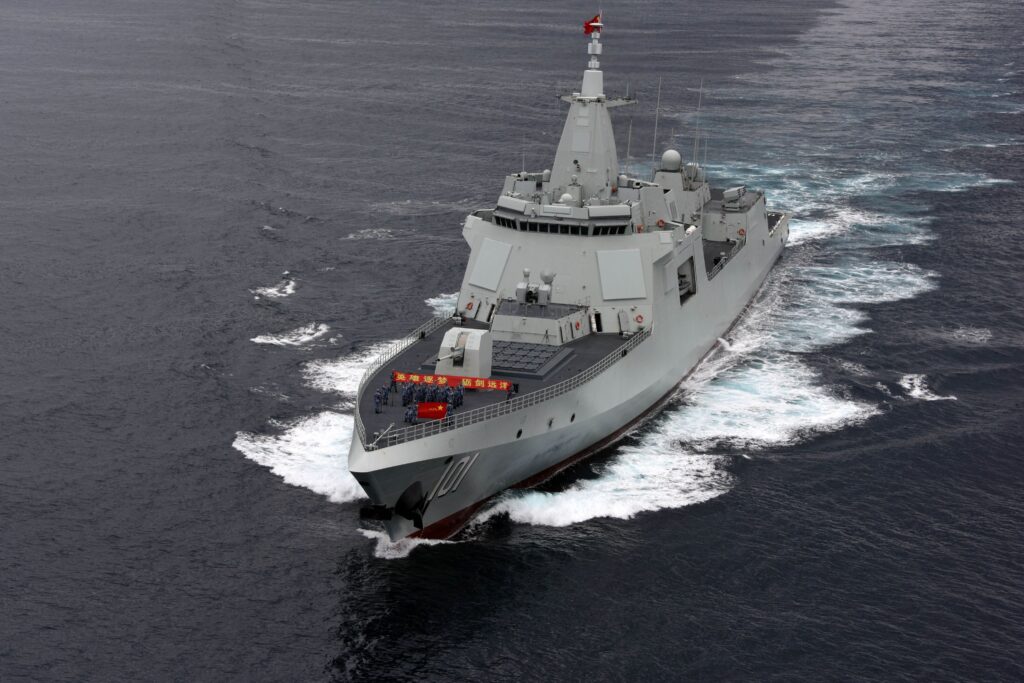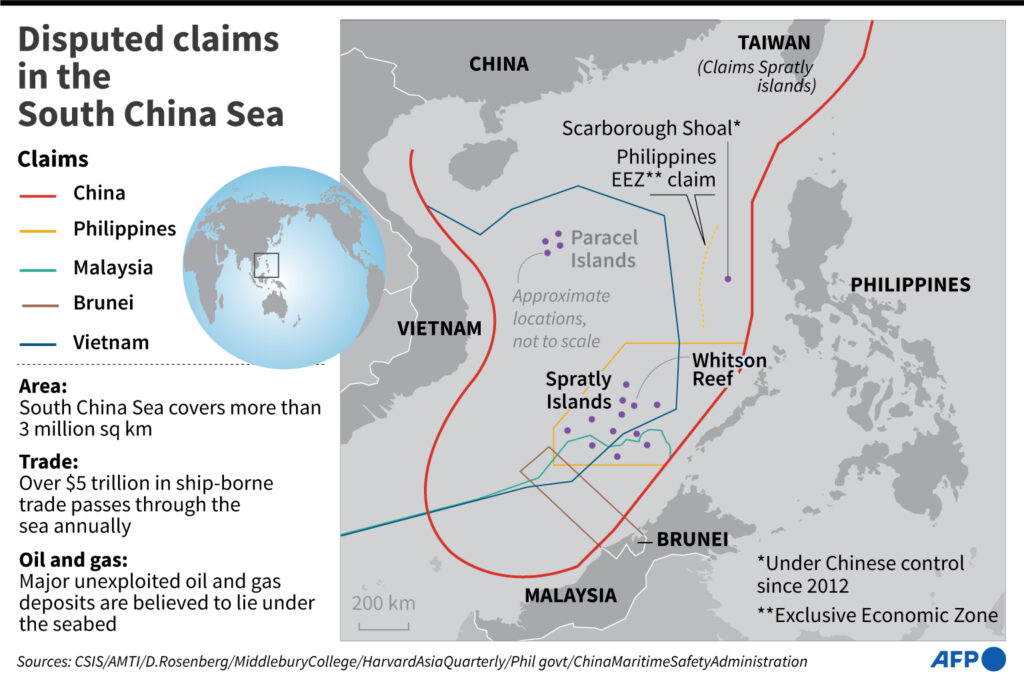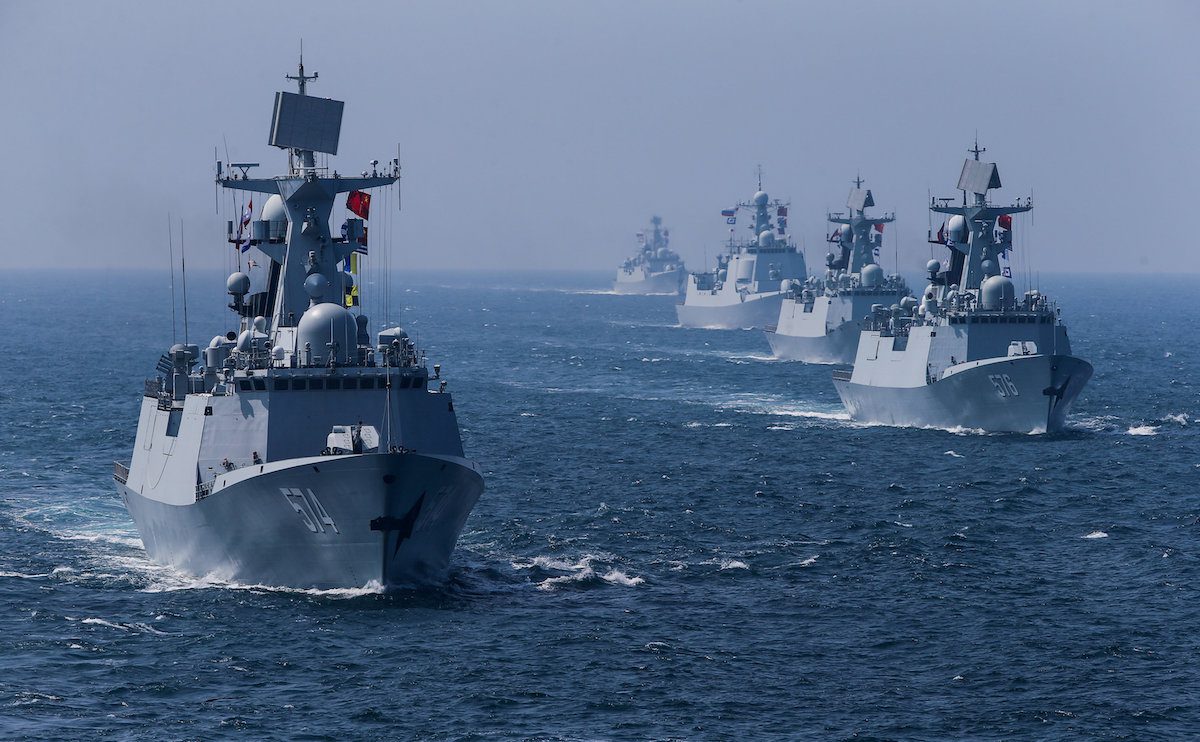Increasing military activity in the disputed South China Sea has been making headlines for civil aviation again recently.
We’ve seen reports of unauthorised clearances being issued over VHF, along with instances of GPS jamming. Here’s what we know, why it’s happening, and what pilots can do about it.
What’s your vector, Victor?
On March 2, IFALPA put out a new safety bulletin – at the same time, several major carriers began to publish their own internal memos too.
There have been recent cases of civilian aircraft being contacted by Chinese military vessels on 121.5 or 123.45 and given vectors to avoid airspace above them. This has been happening not only in the South China Sea, but also the Philippine Sea and far eastern areas of the Indian Ocean.
In the eyes of aviation law, this is a big no-no. Unauthorised ATC transmissions are not only illegal, but highly dangerous because they can reduce your separation with other aircraft or lead to airspace busts. In this case the military vessels involved have no jurisdiction (or business) to be controlling aircraft in open airspace over international waters.

Military vessels have reportedly been broadcasting unlawful clearances to civilian aircraft on 121.15 and 123.45.
All the wrong signals
Then on March 20, reports emerged of another issue. Aircraft operating off Australia’s Northwestern coast have been encountering GPS jamming, purportedly from Chinese naval vessels in the area. This is unusual for the region.
The same problem has also been recurring over in the Western Pacific, and of course in the South China Sea itself.
Unfortunately, as we have seen in other parts of the world such as the Eastern Med, GPS signals are commonly interfered with in areas of high political tension as it makes it harder for the opposition to locate and gather whatever intelligence they are looking for.
It appears this region is no different.
Quit staring at me
So why is this happening?
We’ve written about the South China Sea dispute in detail in the past, and so this article may be a good place to start. But here is the thirty second version.
It may come as no surprise that the South China Sea is heavily disputed. Several states have staked some sort of claim on the region.

Disputed regions in the South China Sea. Map courtesy of AFP.
Attracting the most noise (and perhaps the most powerful claimant) China, has been steadily increasing its military presence in recent years including the construction of man-made islands, air bases and military warships.
All this activity attracts international attention, and the US military along with other countries have been keeping a close eye on what is going on – predominantly through aerial surveillance.
Herein lies the problem.
China maintains that under international law, foreign militaries cannot conduct intelligence gathering activities like surveillance inside its exclusive economic zone (or EEZ for short).
On the other hand, the US argues that under the UN Convention of the Law of the Sea (think of it as a legal rulebook for all marine and maritime activities), that freedom of movement through EEZs should be universal. And that essentially means that countries should not be required to provide notification of their military doings.
It’s worth pausing here – an EEZ is not the same thing as a country’s territorial waters. In the same document, the UN explains it is just a sovereign right to what is beneath the surface. The important part is this: the surface itself is still international water.
The result is lots of people looking, and some that don’t want to be seen which is why we are seeing interceptions, signal jamming and now unlawful clearances becoming more of a problem.

GPS Jamming is common elsewhere, but unusual in the Eastern Indian Ocean.
What can we do about it?
Essentially – protect yourself as best you can. These risks don’t look like they’ll go away anytime soonn, despite their disregard for civilian air traffic.
In their safety bulletin, IFALPA explains that IATA and ANSPs all recommend ignoring any unauthorised contact on the radio. Essentially, give them the silent treatment and continue on your cleared route. It is also important to let controlling ATC know immediately, and also to file a report.
Likewise, if you encounter GPS jamming it is also essential to let people know. You can read a little more about this issue here.
Let’s not normalise the risk
A recent high-profile interception in the region was described by a military official as just ‘another Friday afternoon on the South China Sea.’
These issues are no secret. But for civil aviation it is important we keep an eye on these trends and developments as our safety may depend upon it. The more present a risk is, the more comfortable we tend to become with it. We can’t allow that to happen.
OPSGROUP will continue to keep you updated with changes, along with our free conflict zone and risk database safeairspace.net.
More on the topic:
- More: GPS Jamming (again)
- More: GPS Outages: The Hotspots
- More: GPS U/S in the US
- More: US 737 tests the China ADIZ
More reading:
- Latest: Venezuela & Caribbean Airspace Update
- Latest: ReFuelEU: Europe’s new anti-tankering rules explained
- Latest: US CBP biometrics: BizAv rollout still unclear
- Safe Airspace: Risk Database
- Weekly Ops Bulletin: Subscribe
- Membership plans: Why join OPSGROUP?











 Get the famous weekly
Get the famous weekly 





